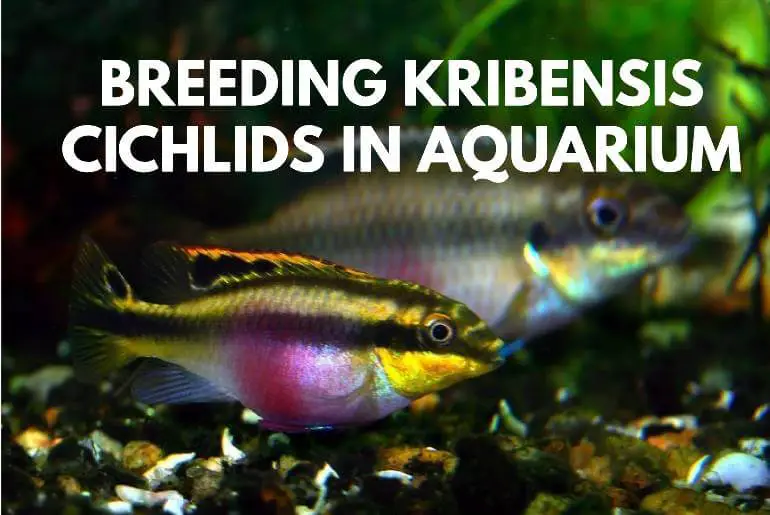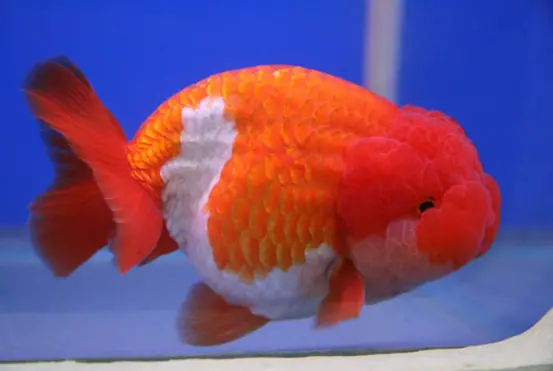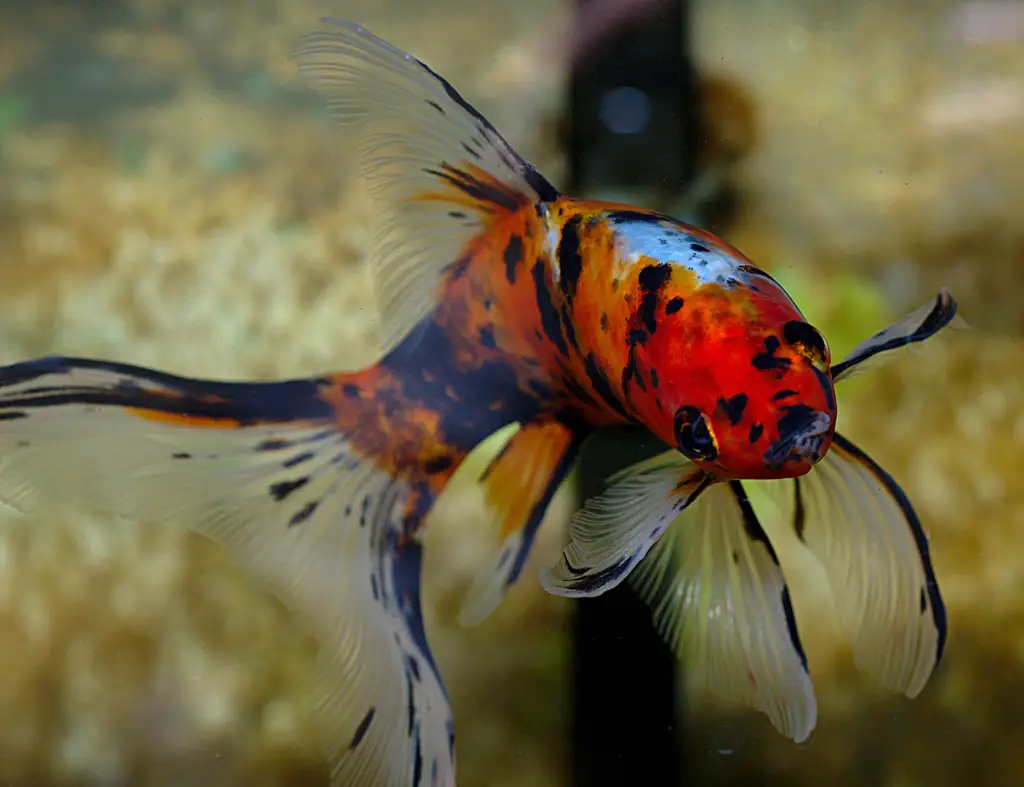If you have seen a Kribensis Cichlid, they might scare you a little. I understand that these little cave dwellers are aggressive during the breeding season. But, breeding Kribensis Cichlid is far easier than it looks!
Kribensis Cichlids are good parents and the male Krib relentlessly protects their brood. The only thing you should be scared of? It’s the other tank mates that live with those Kribs.
Today, I will describe how to sex a Krib, how Kribs breed, and how you can help your Kribs be comfortable during the breeding season. So that, at the end of the breeding season, you get cute baby Kribs in your tank. Now, let’s get started.
Kribensis Cichlids are easy to breed even for beginners. You must keep a monogamous pair of Kribs in a breeding tank and wait for them to bond. To fatten up the female Krib, you must provide blood worms, algae, and a good diet. Moreover, frequent water changes and water parameters must also be balanced to induce successful breeding!
After that, the female lays 100-200 eggs on the roof of the cave for spawning. While the male will fertilize the eggs. The male will relentlessly guard the cave to protect his brood. After the Krib eggs hatch (i.e. 7 days later), the fry will follow their parents everywhere.
Sexual Dimorphism In Kribensis Cichlid
Sexing Kribensis Cichlid for breeding is so easy! The sexual dimorphism, which means the difference between the genders, in Kribs is so obvious.
You should firstly bear these things in mind. Well. Female Kribs have a colorful cherry-red belly which is more pronounced during the breeding season. Whereas, males lack this vibrancy although males, too, have a red belly.
Perhaps the most striking feature of a male Krib is the pointed dorsal fin. Moreover, all the fins are pointed in a male Kribensis Cichlid.
Another difference you can notice is the size. Both the males and females may appear the same size at first. But, if you observe closely, males are about an inch larger than female Cichlids of the same age. This means that males are 4 inches long but females are only 3 inches.
Caring For The Kribensis Cichlid Pair
Kribensis are peaceful fish and willingly stay in a community aquarium. But, this is a completely different case during the breeding season.
Well, okay, your Kribs might breed in a community tank by compulsion. But, the fry isn’t that well protected with different fish swimming all around. The Kribs love their kids a lot so this might just stress out your lovely Kribs.
So, here, I will give you tips on how you can provide a comfortable breeding environment for your Kribensis Cichlids. Let’s start!
Mating Ratio For Kribensis Cichlid
In some fish, the males are notorious for fertilizing plenty of females. For example, livebearer fish like Swordtails, Platies, and Guppy males are harassing their females constantly.
But, you can breathe a sigh of relief now. Male Kribs are quite peaceful and only mate with one female during the breeding season. The Kribs are a monogamous species, you know.
Thus, you should keep one male and one female in a tank. This mating ratio of 1:1 male to female is ideal for breeding Kribensis Cichlid.
Note: If more males are present in the tank, the male may fight for one female. The reverse is also possible, i.e. two females fighting for one male. So, always keep the mating ratio in check.
Get A Separate Tank For Breeding Kribensis Cichlid
Now, you can keep Kribs in your community aquarium for breeding. But, look, the breeding pair better have a tank to themselves because they become very aggressive while spawning and caring for their young.
Corydoras and Plecos may accidentally trespass the Kribs boundaries which results in serious consequences!
Here, I will discuss whether you can give a new tank to the Kribs and make an entire new Krib species tank. Or temporarily keep the Kribs in the breeding tank until the fries become old enough to live by themselves; later shifting them to your community tank.
Strategy1: Temporary Shelter
For temporary shelter, a pair of Kribs need a 20-gallon tank. After the eggs hatch and the fries grow big, you can shift the parent Kribs into a community tank. Then, when the fry grows into big juveniles, you can shift them to your community tank too.
After some time (i.e. once the fry reaches 6 months old), the Kribs or the parent Krib themselves start to mate again. So, you can use this temporary shelter for breeding purposes; returning parent Kribs and fry to the main tank once the work is done.
You need to ensure that, although temporary, the tank’s water parameters should be well maintained. This means that you need to buy a filter, heater, and so on to maintain water parameters in your tank.
Strategy2: Permanent Tank For Kribensis Cichlid
For a permanent Krib tank, you need a very large tank of maybe 50 gallons. This will be your species-only tank and you will dedicate this tank for Kribs.
So, you can keep a pair of Kribs in this tank. And guess what you need to do when fry becomes big? Well, nothing. Because this is a breeding tank as well as a species tank.
The whole family of Kribs will live in harmony in a dedicated Krib tank. That’s because Kribs are barely hostile towards each other, i.e. hostile only during the breeding season when the mating ratio is mismatched.
Here, I’ve mentioned how you can maintain a fry tank and a normal species tank from scratch:
Provide A Cave
I don’t know if you have heard this but Kribensis is a big fan of enclosed spaces like caves. And, I don’t think your Krib will breed if you don’t provide a cave.
The Kribs have lived in caves in the wild for years. And the same conditioning is set in the genes of your Krib.
Now, you may be wondering where to buy a cave from. If you can’t find the caves online, you can use upturned clay pots, PVC pipes, or even upturned big coconut shells as a substitute!
Just ensure that the opening should be smooth and large for exit and entry of the Krib.
Keep as many caves as you can. The pair of Krib will use 2 caves or even more depending on their mood. I have seen fish keepers use 4-5 coconut shells and breed two pairs of Kribs in a single tank. This reduced the aggression in his tank. So, the more caves you provide the better.
Dark Substrate
Kribensis Cichlids love digging out the gravels and substrate. So, provide your Kribs with fine gravel or fine sand that rearranges to suit their needs. Gravels with soft edges will also work.
If you don’t know, Kribs dig out the gravels for many reasons one of which is to make space for their eggs.
Place Aquatic Plants
A bare tank is okay. But, to imitate the wild and to make your Krib happy, care to place some plants for your Krib. Moreover, plants, rocks, and decorations will make it easier for your Krib to establish territory and feel at home.
You can plant a live plant as Kribs aren’t destructive. But, as you know, Kribs likes to dig.
Due to this digging behavior, your Kribs may uproot the loose plants in the tank. So, to protect the plant, you should base it on heavy stones. Constant Uprooting may destroy a living plant. So, Kribs doesn’t mind an artificial plant.
Feeding The Breeding Kribensis Cichlid
To fatten up the female Krib, I’ve seen people use blood worms and other protein-rich food.
A good diet is important because females need to lay eggs. Also because the females need to develop the cherry-red glow on their belly to entice the males.
Not only the females but the males need a good diet too. They protect their brood by constantly guarding the caves, you see.
The Kribs in the wild largely eats algae (mostly blue-green and plain green algae), invertebrates, larvae, daphnia, and other microorganisms. Occasionally feeding on some plants for the veggie supplement.
But, your tank Krib can eat the following diet:
- High-quality Shrinking Pellets rich in omega and vitamins
- Blood worms
- Brine Shrimps
- Mashed peas
- Zucchini
- Packaged Algae
- Seaweed Products like Nori seaweed
I’ve seen many fish owners conditioning their Kribs to eat live food. They say that live food induces breeding.
Feed your breeding Kribs frequently. But, make sure to ensure that the food you give should be consumed in under 3 minutes. If any food remains at the end of 3 minutes, scoop it out with a net.
Maintain Water Parameters In Your Tank
Perhaps the most important role that plays during breeding is the water parameter of your tank. Your Kribs will start to breed within 1 week of conditioning inside the tank.
Ammonia spikes, extreme temperatures, wrong pH might mess with the breeding pattern. If you didn’t know, female Kribs can lose their cherry-red color on their belly due to stress.
If your Kribs are reluctant to breed, you may increase the temperature to 80 degrees Fahrenheit.
Another important thing I forgot to mention is that the pH of your tank determines the male to female Krib fry in your tank. There is literally research proving this.
If you maintain a pH of 7.0, there will be an equal number of male to female fry in your tank. You should maintain this pH for an ideal ratio! Acidic pH, i.e. pH less than 7 will make more females. Higher pH is alkaline pH which will produce more males. Maintaining a pH of 6-8 is okay for breeding purposes.
Try to change 25% of the water every 2 weeks. Kribensis prefer a clean tank over a dirty one, you know.
If you maintain these water parameters, your Kribs will start breeding in no time. If you didn’t know, the balance in water parameter is the secret to breeding Kribensis Cichlids.
How Do Kribensis Cichlid Spawn?
This is all started by the female Kribensis. Once a female Krib is ready, she will entice the male Krib with her cherry-red belly. The female Krib will also arch her body, curl her fins, and vibrate her body in a friendly way.
After this, the male and female enter a cave. Kribs are egg-laying fish. So, the females will lay 200-300 eggs in the cave. Whereas, the male will provide sperm for the eggs externally. Thus, there is external fertilization which is also called spawning.
Is Your Kribensis Cichlid Pregnant?
Now, this question is tricky. You might know about Livebearer fish who get pregnant and bear fry inside their stomach. Moreover, such fish directly birth fry without laying eggs.
But, Kribensis Cichlids don’t get pregnant like that. Once the female is ready, the female lays eggs while the male will spray his sperms over the eggs for external fertilization. In simple words, Kribensis Cichlids are egg-laying fish.
If you want to know if your female Krib is ready to be a mother, she will display cherry-red color on her belly. Also, female Kribs are notorious for acting aggressively during the breeding season.
What Do The Kribensis Cichlid Do For Their Babies?
Kribensis Cichlids are very loving parents. They relentlessly guard the caves and provide good care to their eggs as well as the fry. But, things don’t always work that way. Let us learn some peculiar parenting skills of a Kribensis Cichlid.
Make Caves In Gravel
If you don’t provide a cave for the Kribs, the Kribs will relentlessly dig out caves/nests from the substrate and gravel. All for protecting their young! I think this behavior to protect their eggs and fry is rather endearing.
Guarding The Cave
Once the eggs are fertilized, mostly the males will guard the caves nipping any fish that swims around. The males and females will take turns to guard the cave. The females occasionally come out of the cave to eat food.
Aggressive For Protecting Their Babies
Kribensis Cichlids don’t mind biting, killing, and terrorizing the tank mates who might harm their kids.
Although this is a good thing for the Krib fry, the tank mates will probably get stressed out.
Mother Krib May Turn Against The Father
In some cases, you may see a slight change in the parenting pattern. The female might take responsibility for the kids and terrorize the male Krib away from the fry.
This is funnily equivalent to human divorce where the female takes custody of the kids.
If you observe this, swiftly shift the male Krib into another tank.
When To Separate Parents From Their Babies?
Kribs don’t like to separate from their eggs before they hatch. But, when will you know if it’s time to separate the parents from the fry?
Firstly, Kribensis lose interest in their kids once they grow up. I’ve seen Krib parents not care for their young after a month of eggs hatching.
Sometimes, though, the Kribs take care of their fry for a long time. In this case, you should separate the juveniles from their parents after they reach half an inch in size!
FAQ
Can You Breed Kribensis In Community Tank?
Yes, breeding Kribensis Cichlid in a community tank is plausible. But, the aggression during breeding season is usually uncontrollable!
This problem can be eliminated by removing bottom dwellers in your tank. Also, you can provide caves to shelter the Krib eggs from other predators in the tank. If you have a tank space of 20 gallons for the Kribs alone, this problem can be eliminated.
How Often Do Kribensis Breed?
Kribensis Cichlid breed every 4-5 weeks. Moreover, the Kribs stay as a pair for their whole life.
Conclusion
Breeding Kribensis Cichlid is easy even for a beginner. All you have to do is provide a separate tank with a heater and filter. Then, maintain water parameters. Also, don’t forget to provide a cave.
After this, provide a good diet to fatten up your female Krib. Rest, you don’t have to worry! Kribs are good parents after all. All you have to do now is to observe if there is any problem regarding the breeding of Kribensis Cichlid. Problems will be rare after this. So, all the best and happy fish keeping.





